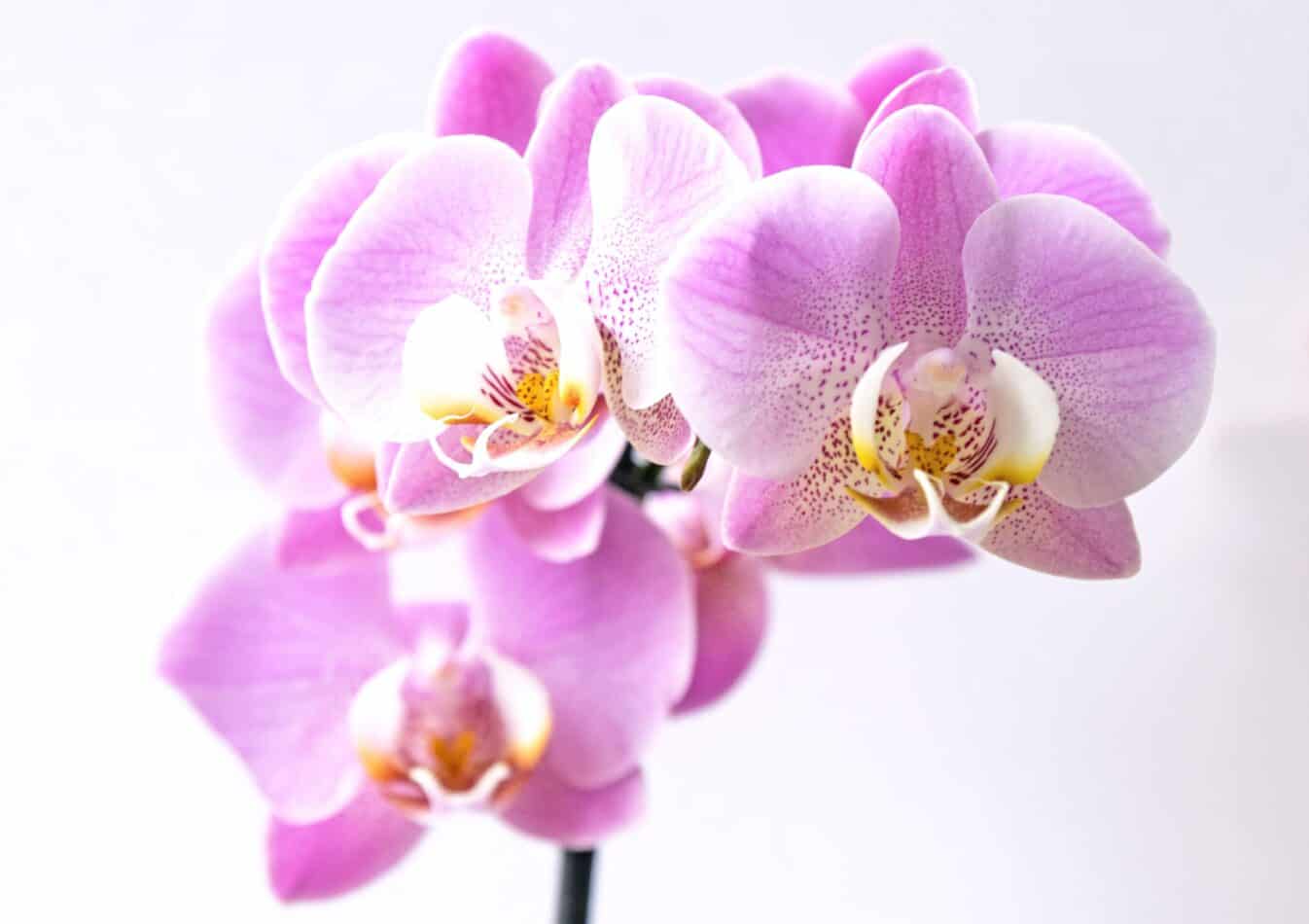The Fairy Iris, also referred to as Dietes grandiflora, is a majestic rhizomatous evergreen perennial that produces large Iris-like blooms. The flowers consist of six white petals, three of which are adorned with brown dots and the others with a yellow stripe. From the center, three lilac arms stretch outward, creating a gorgeous display. Dietes grandiflora is a member of the Iridaceae family and is of the type of plant known as a perennial. Its season of interest is in the summertime, and the flowers quickly rebloom.
How to Plant
Fairy Iris can be a wonderful addition to your outdoor garden or used for interior decorating in the home due to its delightful blooms and long blooming season. It can tolerate both acidic and alkaline soil condition, but performs best when planted in moist soil with good drainage. It should be given plenty of sun exposure to ensure its best growth and flowers. If potted, make sure to use soil that is specially formulated for flowers and resistant to water-logging.
When it comes to planting Fairy Iris, the easiest way is to divide the rhizomes in spring or early summer and replant them in new pots, or directly in the ground. When planting in the ground, choose an area that is moderately shady. This will help to prevent the plant from being scorched in the blistering summer heat.
Meaning and Symbolism
The Fairy Iris has been associated with various meanings and symbols for centuries. It is believed to be associated with the consequences of overreaching one’s goals, and that it can bring good luck to those who keep it near. The scientific name ‘grandiflora’ means ‘large flowers’, and is a reference to how the colorful blooms of the Fairy Iris stand out in the garden. It is also believed to represent patience and a love for all things elegant and beautiful.
History, Mythology and Religious Significance
Fairy Iris has a long history that dates back to ancient times. It was popular among ancient Greeks who often used the flowers to decorate their gardens and homes. The species was also mentioned in classic Greek literature like that of the famous ancient playwright Aristophanes. Fairy Iris has also been mentioned in Christian literature, particularly in the Old Testament.
In some cultures, the Gaelic name ‘Lus na n-eun’, literally meaning ‘Garden of the birds’, has been used to refer to Fairy Iris. The phrase is thought to be in reference to how the colorful blooms of the flower attract birds to the garden. It is also believed that in some cultures, the Iris was regarded as a symbol of faithfulness and purity, but this has not been universally accepted.
Flower Varieties and Their Defining Characteristics
The Fairy Iris comes in a wide range of varieties, each with their own unique characteristics. Some of the more popular varieties include the pink-flowered ‘Pretty Princess’, the ‘Pearl’ variety with white blooms, and the ‘Cameo’ with its attractive pink and white blooms. All these varieties have large blooms and stand out in the garden with their bright colors.
The ‘Big Blue’ variety is also popular among gardeners. It features large, deep blue-violet blooms with contrasting yellow and white accents. ‘Little Blue’ is a more compact variety that produces small, light blue flowers. This is a great variety for indoors or those with smaller gardens.
How to Pot and Repot
Potting and repotting Fairy Iris is a straightforward and easy process. When potting for the first time, select a pot that is about twice the size of the root ball. Fill the pot with loose and well-draining soil, and use a good potting mix, such as one that is formulated for flower plants. Make sure to not pot too deeply as this can lead to roots under-developing.
When repotting, use the same methods as when potting for the first time and select a pot that is about two sizes larger than the root ball. The soil should also be evenly moist and well-draining. Prune off any dead or diseased stems before repotting.
How to Prune
Fairy Iris requires minimal pruning, however, it is important to periodically trim the growth at the end of the blooming season. This should be done to regulate growth and improve shape. When pruning, use sharp pruning shears or scissors to trim only the dead and dying stems of the plant. Additionally, you can also trim off any stray stems or leaves that are out of place.
How to Propagate
Propagating Fairy Iris is easy to do with either division or seed methods. When dividing, separate the root clumps into two or three sections and replant each section in individual pots. This should be done in early spring when the roots have just started to become active. For seed propagation, collect the seeds of the flower and let them dry in a cool, dry place. Once the seeds are dry, sow them in a pot filled with a moist soil mix and place in a spot with full sun exposure. Water the soil regularly and within a few weeks the seeds should germinate.
Common Pests and Diseases
Fairy Iris is relatively resistant to pests and diseases, however, it can be susceptible to powdery mildew, fungal leaf spot, and aphids. Powdery mildew is caused by humidity and can be prevented by keeping the plant in a sunny spot. Fungal leaf spot can be caused by damp, wet conditions and can be prevented by good air circulation. Aphids can be controlled with an insecticide or by releasing ladybugs, which will eat the aphids.
Frequently Asked Questions
Q: Is the Fairy Iris a good choice for indoors?
A: Yes. Fairy Iris is a great choice for indoors due to its compact size and compact root system, making it ideal for containers. It also doesn’t require too much light or water, making it very low-maintenance.
Q: How often should I water Fairy Iris?
A: You should water the Fairy Iris regularly, keeping the soil consistently moist. During the summer months, you should water more frequently, as this is when the plant is actively growing. During the winter months, water less frequently and make sure not to overwater the plant to prevent root rot.
Q: Does the Fairy Iris need fertilizing?
A: Yes, the Fairy Iris does need to be fertilized during the growing season to ensure its best growth and flower production. You should select a good quality fertilizer that is specially formulated for flowers and follow the instructions on the packaging. It is best to fertilize during the spring and summer months when the plant is actively growing and producing flowers.
Table Fact Sheet
| Fairy Iris | Dietes grandiflora |
|---|---|
| Family | Iridaceae |
| Plant Type | Perennial |
| Mature Size | 3-4 ft. tall and wide |
| Sun Exposure | Full sun to partial shade |
| Soil Type | Rich and moist, well-draining |
| Soil pH | Acidic to mildly alkaline |
| Bloom Time | Late spring to early fall |
| Flower Color | White, pink, purple, blue |
| Hardiness Zones | 7-11 |
| Native Area | South Africa |
What we love from Amazon this week
Buy these wonderful flowers directly from Amazon:















